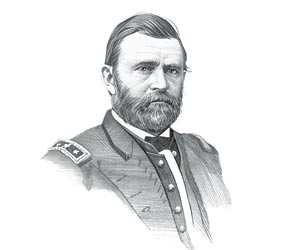|
|
|
|
|
Panic of 1873 Facts for kids The Panic of 1873 started on the back of the economic depression that was engulfing Europe resulting from the Franco-Prussian War (1870-1871). The effects of the European depression, and the resultant failure of foreign investment in the US, led to the ruin of the banking firm called Jay Cook and Company. Jay Cooke, the founder of the private banking house of Jay Cooke & Company in Philadelphia, had helped finance the Civil War and then became involved in the development of the railroads during the Reconstruction Era. Jay Cooke & Company financed the construction of the Northern Pacific Railway. The company over-stretched itself by advancing the money for the railroad work and was was forced to suspend its operations and Jay Cooke was forced into bankruptcy. The Panic of 1873 began in the United States on September 18, 1873 (Black Thursday) following the collapse of Jay Cooke and Company. Several other major banks also collapsed on the same day ruined by over speculation during reconstruction especially in relation to the railroads. The extent of the economic crash was so great that the New York Stock Exchange closed on September 20, 1873 and did not reopen for ten days. There were runs on state banks, bank closures, foreclosures and bankruptcies. Banks demanded payment of of debts by manufacturers and industrialists Railroad construction was greatly reduced, factories were closed, businesses were ruined and unemployment soared There were an alarming number of foreclosures and bankruptcies. The prices of manufactured products plunged, inflation rose, the money supply dried up and credit was not available. Thousands of Americans lost their jobs and their homes. The destitute depended on charities to enable them to survive. 100 railroad companies suffered immediate bankruptcy and many thousands of railroad workers lost their jobs Over 18,000 businesses failed between 1873 and 1875 Nearly 1 in 8 Americans became unemployed. Building work stopped, the value of land dropped and profits crashed The employers that were still in business cut wages. Average wages fell by nearly 25% Workers went on strike because of the pay cuts - refer to the Great Railroad Strike of 1877 There was civil unrest, demonstrations, protests and violent riots across many of the cities in the United States. The violent actions of the rioters and strikers lost public support but unions like the Knights of Labor and the American Federation of Labor were established - refer to US Labor Unions History Many Americans took desperate measures and entered hostile Indian territories in search for gold. The economic crisis also saw the emergence of the 'Molly Maguires', a secret society of Irish and Irish American coal miners based in Pennsylvania The effects of the economic crash of 1873 and subsequent depression lasted for many years and the economic productivity of the United States fell by over 24%. |
| US American History |
| 1866-1881: Reconstruction Era |
|
|
|
|
|
First Published2016-04-19 | |||
|
Updated 2018-01-01 |
Publisher
Siteseen Limited
| ||
|
|

